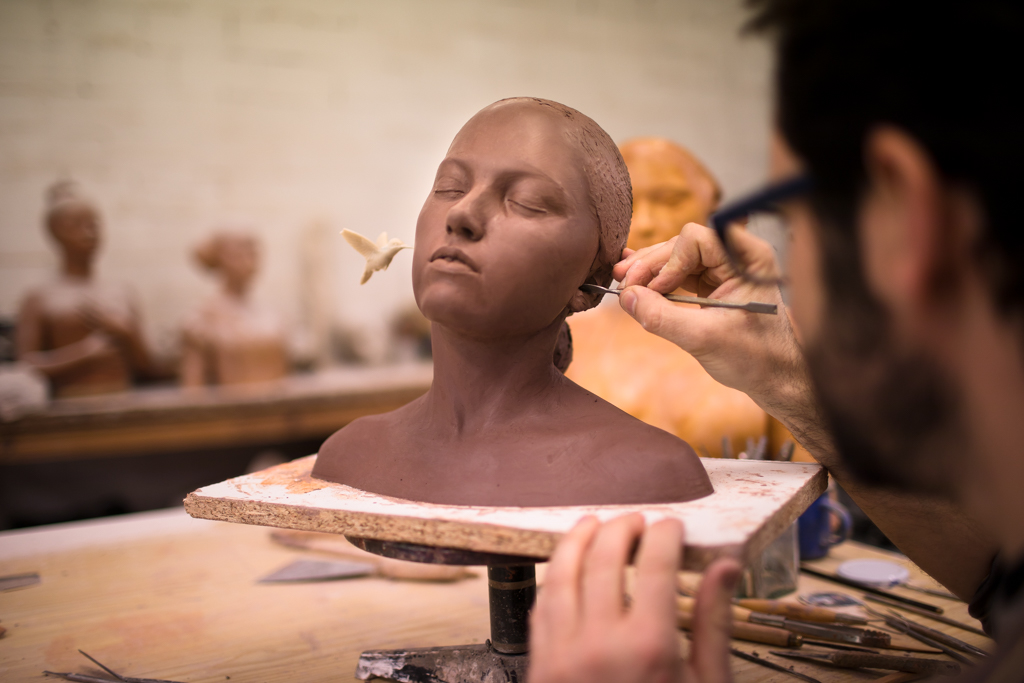Defining irony is not a simple task let alone detecting it. The meaning that comes from its Greek origen, has been changing throughout the times according to culture. Irony has been a resource used in many areas and has been profusely studied in literature and philosophy. This has not been the case in the visual arts, even though the artists, throughout time, have had in irony an extensive tool to approach reality and provoke the reaction of the public. The great master of irony in contemporary art was Marcel Duchamp, who with his ready-made included a certain sense of subversion.
Irony is a mechanism used widely by contemporary artists because it delivers a critical view of reality and offers many keys to the participation. In the discourse of irony, the artist and the viewer are situated in the same scene, as both can enter in a space of possible misunderstandings and contradictions because there cannot be any guarantee that the public understand the original intention.

The objective is being part of the game of accepting doubt. This mechanism has become the ideal one for the artists who aim to place doubt in a single discourse, since irony obliges us to reflect. Widely linked to the ironic subversion and the transgression of reality, the sculpture of Gerard Mas (Sant Feliu de Guixols, 1976) raises uncomfortable co-existences of elements that pertain to different worlds.
These impacting coexistences which disconcert and trouble the receptor, a proposal which sides with the rupture and fracturing of established morphology. It is precisely this dialogue between the classic world and the contemporary, the past and the present, reality and fiction, the transcendental and the comical, the anthropomorphic and the zoomorphic, which produces these surprising images, due to the paradox, the enigma, the contradiction and the irony.
Although his works has much esthetic affinity with tradition, the anti-conformist attitude of decontextualization gives a very personalized touch to his work which does not go unseen. A classic figure and with monumental will, but created by unexpected juxtapositions which carry us to an ironic and oneiric reading at the same time.
The several formal preoccupations have been at all times centred in the expression of materials used (marble, wood, resin) being the authentic protagonists, precisely because we discover in them all there primordial characteristics. A range of intervention in each one of the materials and their manipulation is in every instance subtle, painstaking and perfectionist in order to get a tactile and sensual voluptuousness.
With an academical training, Gerard Mas resumes paintings from the latest gothic and the renaissance which converted into imaginary portraits with the objective to provoke exchanges and visual metaphors. The representation begs to come out of the canvas so that their visual tricks acquire a tridimensionality and corporeity. He practice the sculpture as a way of appropriation, creating dialogues between tradition and modernity, cult quotes translated with important touches of irony. Mas is interested in the image from the point of view of the visualization, emptying its historical significance, perhaps as a paradigm of the present understanding in which the image replaces the content. A linguistic exercise which consists in offering a new version of the already existing image, changing the code and altering the system, this is his principle key. The repertoire of visions from the past through expressive dislocations and the incorporation of disparate elements works to establish a dialogue with the art from the art, breaking any historical discourse.
The titles of his works are all eloquent and specially the series of the Dames is a great example of the representation of absurd attitudes and grotesque situations; pieces of an esthetic ostentation completely anachronistic . Whilst the faces of the women are sweet and charming, soft and delicate, with pearly white skin, the wasps in an uncomfortable place in Dama de les vespes, (Lady of the wasps), a thermometer hanging from her lips in Dama del termometre (Lady of the thermometer), a chewing gum bubble in Dama del xiclet (Lady of the chewing gum) or the orthodontics in Dama de l’ortodoncia (Lady of the orthodontics), break the idealistic perfectionism of their crystalline beauty to put it next to the reality, the ugliness and human misery. One of his most impacting works is Dama de la rata; a related work of the Lady with an Ermine (a mamal from the family of mustelids), work of Leonardo da Vinci, that instead of holding and stroking in her hands this animal – symbol of purity because of his white appearance – he holds a rat, an animal that is disgraced and cursed.
Ultimately, associations, correspondances and displacements of those of Gerard Mas, which create situations of contrast and of shock which impact the spectator and force it to look for new formal and significant relations in the evocation of each proposal.
by Conxita Oliver, Art Historian
